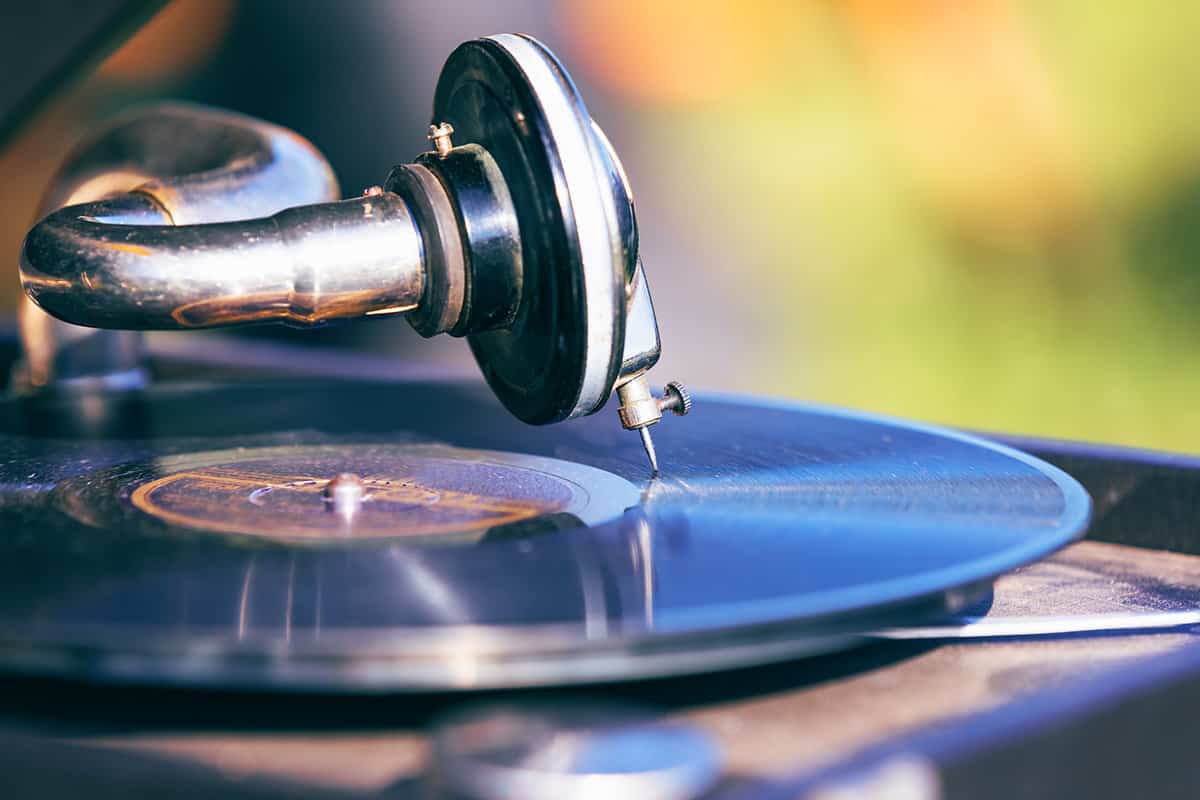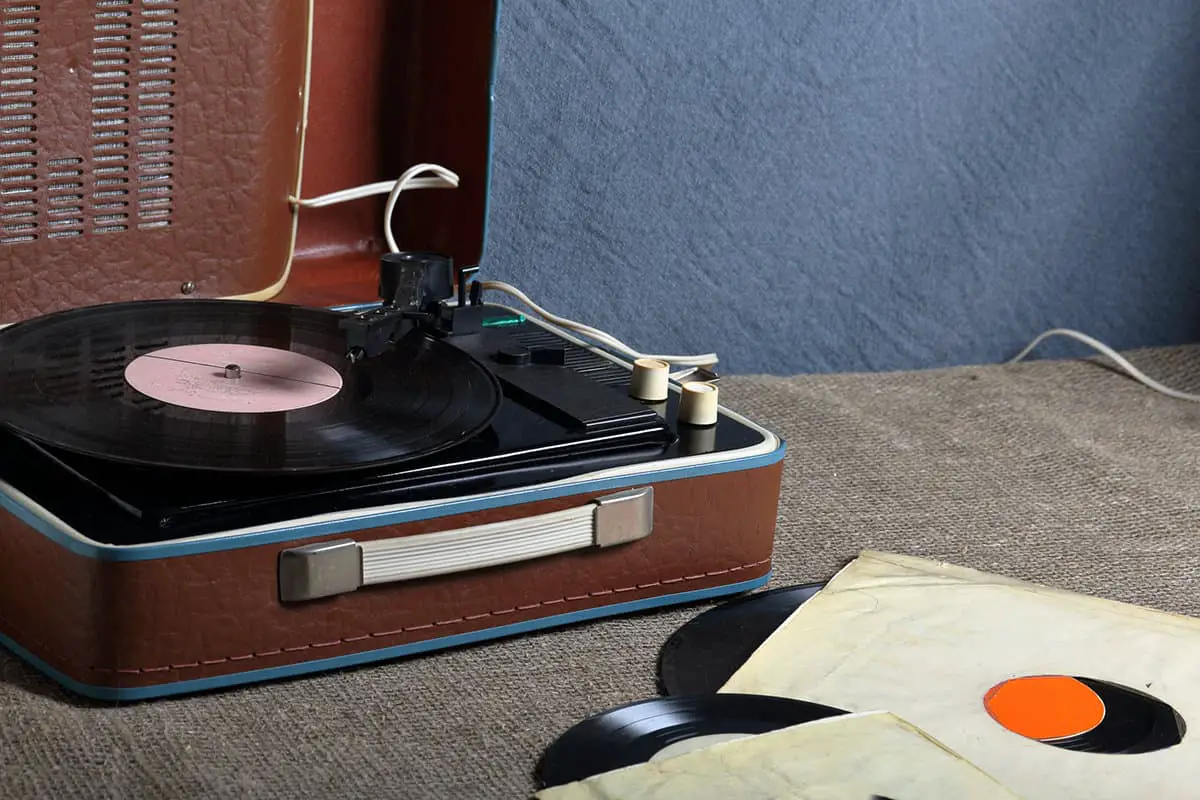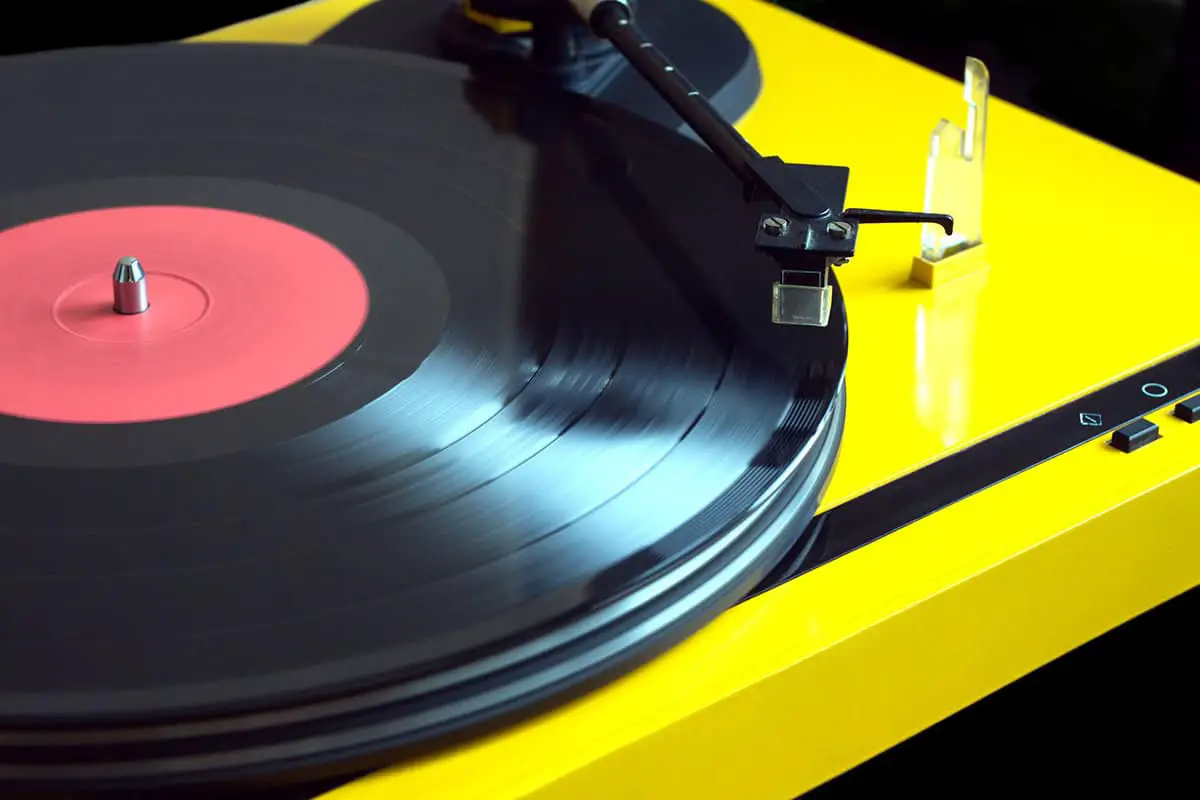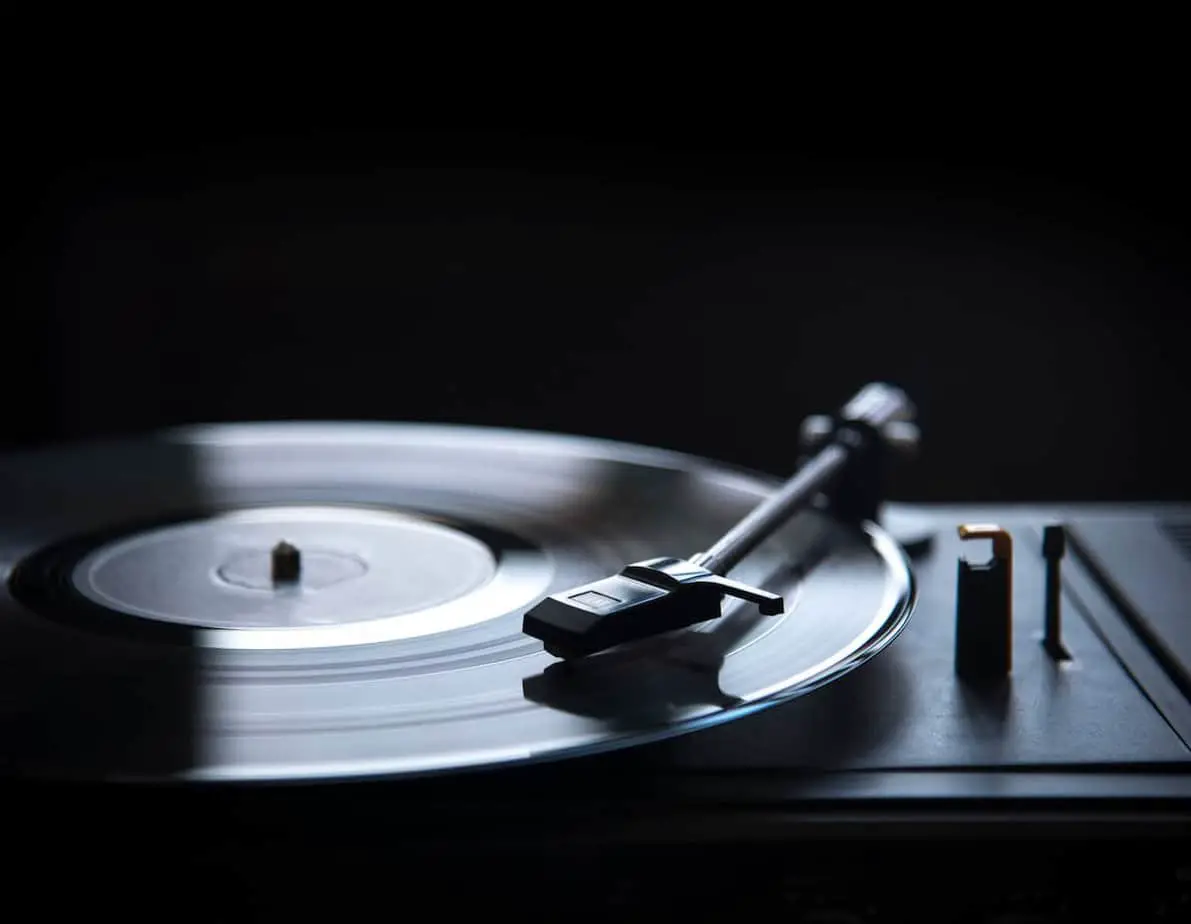This post contains affiliate links.
With the revival of the vinyl industry over the last few decades, there has been a sudden influx of sellers offering a wide array of alternatives for record players. Although this process has brought on some excellent, high-quality turntables enthusiasts can purchase for a much more affordable price, there has been a resurgence of cheaply-made options as well. Portable record players are now more accessible, but are they bad for records?
Most portable record players are bad for records. They feature low-quality styluses with a very limited lifespan and can damage your vinyl pieces. Although there are some higher-quality options, beginners should err on the side of safety and skip them altogether.
Although there are tweaks and tricks you can use to optimize the performance of these cheaply-made turntables, more often than not, it’s not worth the trouble. Read on to explore the article — are portable record players bad for records — and learn why most portable turntables can damage your records and how to choose a record player if you’re a beginner.
Table of Contents
Why Are Portable Record Players Bad for Records?
The extent to which a portable turntable can damage your vinyl pieces depends on various components such as brand, material quality, design, etc. Therefore, although you can find some higher-quality options on the market, a standard portable record player won’t be ideal for your records’ longevity.
Portable record players are bad for records because they’re usually made of lower-quality materials. Furthermore, their unique design makes their shape unideal for your average record, with incompatibilities in both size and functionality.
Portable Record Players Usually Have Low-Quality Stylus
Given that the needle is a component that comes in constant direct contact with your discs, its material and design are essential for the maintenance and longevity of your piece.
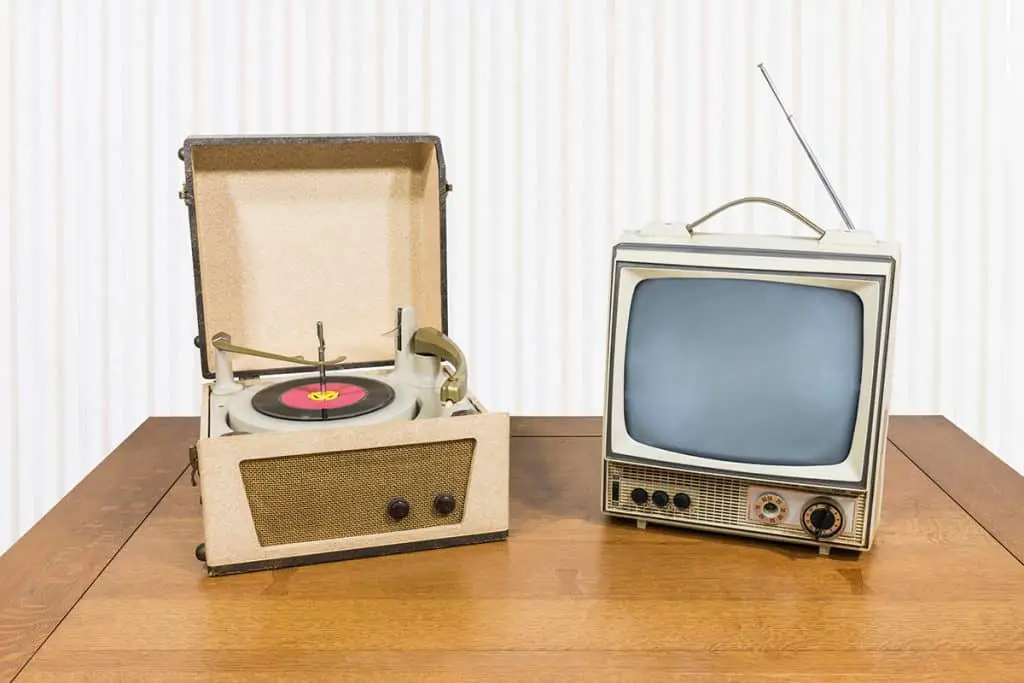
Usually, the golden standard when it comes to stylus construction is to use a diamond or sapphire tip. Portable options tend to run on the cheaper side, meaning that you can’t expect premium materials being used on any component, stylus included. More affordable, less durable needles will wear out as time goes by and can cause significant damage as the vinyl moves around due to excessive friction.
Styluses found on some of the worst-quality turntables can last as little as 40 hours, meaning after a certain amount of time, you run the risk of the needle causing irreparable scratches and marks to your records.
The worst part is, you most likely won’t be able to notice any sign of damage until it’s too late, as most scratches won’t be immediately visible. Therefore, if you think you can use a cheaper option for a limited time and change the stylus when you spot signs of damage, keep in mind that you likely won’t be able to efficiently figure out the exact time when the stylus becomes unusable.
If you already own a portable turntable and want to improve its quality and longevity, a great strategy to try out is to replace the stylus with a high-quality alternative. Replacing the needle is a pretty straightforward process that can make the biggest difference in the quality of your records.
The Platters of the Portable Record Players Are Small
Portable record players are made with convenience and movability in mind. Given that this quality is their whole selling point, they often tend to be smaller and lighter compared to their traditional counterparts. But this ease of movement isn’t always as much of an advantage as manufacturers make it out to be.
Most records are sized based on a conventional turntable, meaning when using a smaller alternative, the piece will most likely hang off the side, causing it to bend and move unnaturally during its spins.
It will lead to the loss of sound quality while simultaneously damaging the structural integrity of your vinyl. Furthermore, the imperfect spins can lead to the needle skipping over the record altogether.
Portable Record Players Lack the Necessary Features
These types of record players present their users with many functionality issues as well.
Firstly, most of these alternatives don’t include an anti-skate feature, which stops the arm from swinging uncontrollably towards the center or outside the record. This feature keeps the stylus centered, which maximizes sound quality. At the same time, it allows the vinyl to spin smoothly and minimizes damaging friction.
On the other hand, counterweight adjustments allow you to ensure that the needle is never too heavy or too light, keeping the tracking weight between 1 and 3 grams (0.03 and 0.10 oz). You can make adequate adjustments by looking at the end of the tonearm (found on the opposite end of your stylus) and turning the dial until it reaches your preferred level.
These features also tend not to be included in cheaper portable record players, which, as you can imagine, can significantly affect its overall performance. Another detail that you’re unlikely to find in these options is the possibility of altering alignment facets. That means you won’t be able to optimize the longevity and quality of your turntable by adjusting its alignment according to your needs.
Therefore, when deciding on the ideal record player for you, consider these significant shortcomings before making a decision.
How To Choose a Record Player as a Beginner
If you’re a beginner and are struggling to find a turntable that will fit your preferences as well as your budget, there is no need to go for the first cheapest record player that you see, just like there is no need to go for the most expensive piece, either. By going through a few simple steps, choosing the best possible option for you can be easier than you’d think.

Decide Why You’re Buying a Record Player
Purpose matters when choosing a turntable. Suppose you’re an audiophile looking to experience the most authentic, high-quality sound. In that case, you’ll need to look at a completely different range of options compared to casual listeners looking to support their favorite artist.
That’s why understanding your reasoning behind the purchase will allow you to determine the ideal type or model you’ll want to be looking into, along with a rough estimation of your preferred price range.
Either way, I suggest looking at your first purchase as a true investment piece, as you’ll ideally want to hold onto your expensive equipment for as long as you can. Additionally, records themselves can also get very pricey, meaning acquiring a turntable that can maintain and optimize their longevity can be very beneficial in the long run.
Determine the Features You Want
As I mentioned, some features are essential for the performance of your record player. Therefore, when choosing an alternative, look for one with adequate downforce, an anti-skating component, counterweight adjustments, and a high-quality tonearm.
This might be the most crucial step you’ll need to go through, so look into any possible features that you might want to be included in your piece to be able to make a well-informed decision.
Make Sure You’re Pleased With the Aesthetics
Last but not least, a turntable should match your desired aesthetic, as these pieces are designed to add an unparalleled flair to any space they’re included in. An excellent record player should not only produce fantastic acoustics, but it should also be visually pleasing and stimulating; therefore, don’t compromise on this factor when choosing your equipment.
Conclusion
Portable record players can often damage your records due to low quality and poor design. Although there are some better-made alternatives on the market today, if you’re a beginner, it’s best to avoid these turntables altogether and go through a thorough selection process to find the ideal record player for you.
VacationVinyl.com is a participant in the Amazon Services LLC Associates Program, an affiliate advertising program designed to provide a means for sites to earn advertising fees by advertising and linking to Amazon.com. We also participate in other affiliate programs which compensate us for referring traffic.

